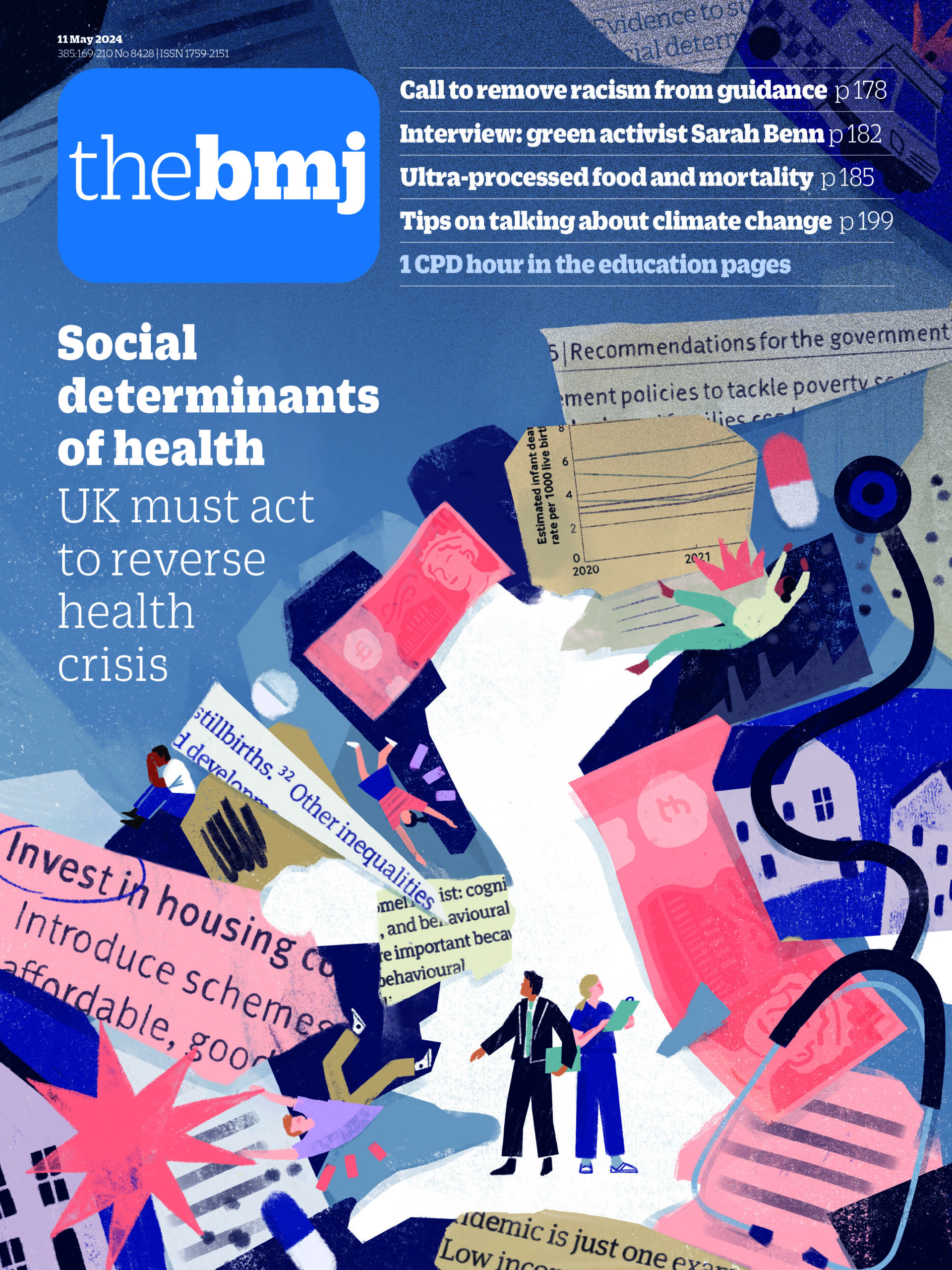- David Oliver, consultant in geriatrics and acute general medicine
- davidoliver372{at}googlemail.com
Follow David on Twitter @mancunianmedic
In June 2023 NHS England (NHSE) published its long awaited and serially delayed long term workforce plan for the NHS.1 In the 10 months since then we’ve seen pay disputes, difficult contract negotiations, strike action, and ballots of clinical staff.234 While the BMA’s Consultants Committee has now settled a long running contract dispute with the government,5 its Junior Doctors Committee seems no closer to a negotiated settlement.6 We continue to face serious problems with workforce retention and morale, as well as staffing and rota gaps across a range of clinical disciplines—in nursing even more so than medicine.7
Last month the BMA published a paper on “tackling medical attrition,”8 estimating that in 2022-23 some 15 000 to 23 000 doctors had left the NHS workforce, that replacing them would cost £1.6bn to £2.4bn, and that ever more doctors were taking steps to leave. It called for urgent action on retention through a variety of practical actions.
There’s also been considerable controversy over the expansion of physician associate and anaesthesia associate roles announced in the workforce plan and over the General Medical Council’s plans for their regulation.910 This has drawn several medical royal colleges into fractious disputes with their own members.111213
FOI request
One would hope that NHSE had anticipated some of these troubles and hadn’t been complacent about mitigating or preventing them. I wanted to understand what attempts it had made to anticipate and plan for such problems as part of developing its workforce plan and whether it had tried to modify or avoid serious risks. So, in February I sent NHSE a freedom of information request asking if it could share the risk assessment that had accompanied the workforce plan. My requests were met openly, with only names of individual officials redacted.14
For such a major policy initiative with such serious long term implications, I was surprised by just how scant the risk assessment was. It contained only 12 areas of risk: these included the timeline for delivery; the fact that the NHS service strategy was in development and so would change workforce needs; that national policy decisions, such as around terms and conditions, could “destabilise industrial relations”; and that “multiple layers of governance” involving multiple organisations might hamper planning and delivery. Industrial relations and the impact of national policy decisions continue to play out, and the other issues remain very real.
The original workforce plan had contained a commitment to “adequate growth in foundation placement capacity” and “a commensurate increase in specialty training places that meets the demands of the NHS of the future,” while pledging “to work with stakeholders to ensure this growth is sustainable and focused in the service areas where need is greatest.” Yet these areas lack operational detail in the plan, and right now we have serious concerns about foundation doctors being sent to any part of the country, at short notice with little say in the matter, or finding themselves temporarily unemployed.1516 Also worrying is that doctors entering core or higher specialty training, or indeed completing their postgraduate training (for instance, as GPs) are stuck at bottlenecks and unable to find substantive, stable work.17
There’s currently no financial commitment and no detailed logistical delivery plan or timeline for delivering the aims of the workforce plan. For instance, is there any funding to pay for the workforce or medical and nursing school expansion or capital investment in facilities? There have already been news reports of a pause in the expansion of medical school places, especially for UK citizens, with newer medical schools complaining about the lack of support.18
Regarding any impact assessment of the growth of various workforce groups including physician and anaesthesia associates on the rest of the workforce or on training, the official answer I received was that “no specific risk assessments were undertaken at programme level.” In view of subsequent events this seems overly complacent.
Watering down
I completely understand the political constraints on a plan whose intended life will traverse at least three parliaments, several spending reviews, and changing economic circumstances. But I have serious doubts about the rigour of the risk assessment, the lack of impact assessment, and the failure to anticipate the backlash against some of the plan’s elements. There’s no cross party commitment to the plan, which puts its delivery at risk after the next general election. Delivery certainly doesn’t seem to be on schedule currently.
What we can hope for is that sufficiently good governance, learning, engagement, and review structures and mechanisms can be put in place so that the workforce plan can be updated and improved as it’s implemented, to mitigate some of the risks currently unfolding. However, if our economic performance as a nation continues to decline, I can envisage further watering down or delayed timelines for the headline commitments.
